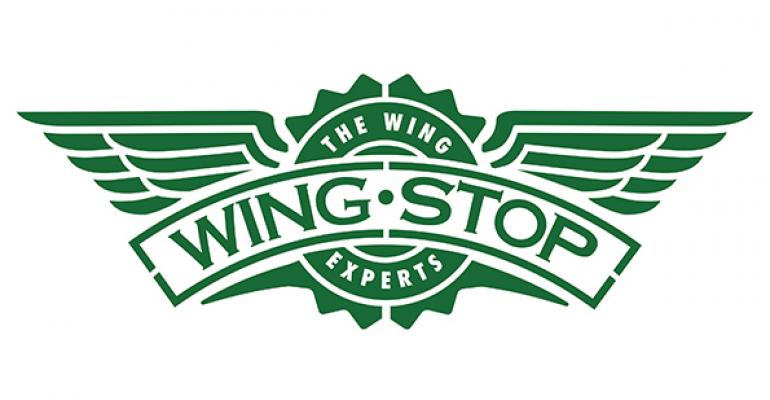Chicken wings flew out the door at Wingstop Inc. in the second quarter as same-store sales rose 9 percent, fueled in part by growing use of online orders, the company said this week.
Speaking during the company’s earnings call late Thursday, Wingstop executives said that online orders at the 785-unit chain grew to 13 percent of sales in the period ended June 27.
“It’s definitely something we believe has long-term, strategic benefits for the brand,” CEO Charlie Morrison said on the call.
Online orders make sense for Wingstop, largely because 75 percent of its orders are takeout.
The company’s online and mobile ordering platform enables customers to order and pay before they arrive and have it ready to go when they show up at the location. That makes it more efficient both for customers and for operators in the mostly franchised brand.
Half of Wingstop’s customers are part of the younger, “Millennial” generation. “This is down the middle as to what our customers expect,” Morrison said. “This has great prospects for the future.”
The earnings call Thursday was the first for Wingstop since the Richardson, Tex.-based chain’s June IPO — when the chain’s stock rose 61 percent on its first day of trading.
The company raised $40.8 million, and shareholders in the company raised $85.9 million in the IPO.
Revenues in the quarter increased 18 percent to $19.2 million from $16.3 million in the same period a year ago.
Net income fell 77 percent to $584,000 from $2.5 million in the same period a year prior. But net income adjusted to factor out one-time costs rose 19.6 percent to $3.2 million.
The company’s franchisees opened 40 new restaurants in the period, and the systemwide restaurant count rose 19.5 percent.
Commodity costs increased 26 percent during the quarter due largely to an increase in the price of bone-in wings. However, executives said that labor costs and other operating expenses were lower during the period.
Morrison said on the call that same-store sales have been driven by a growing brand awareness, the chain’s effective use of social media and strong performance by new stores. He also said the company limits changes to its menu to keep operations simple.
In addition, he noted that the company has a profitable, simple business model that encourages operators to build new units. It costs $370,000 to build a new location, on average, and unit volumes average $1.1 million.
“Our real estate requirements are flexible,” Morrison said. “We have a unique demographic profile, ample opportunities to grow our restaurant base. Our concept is portable. We have one of the lowest closure rates in the restaurant industry and significant white space to grow.”
Domestic same-store sales, Morrison said, have risen 36.2 percent over the past three years, and the number of restaurants in the system has increased 50 percent since 2011. The company’s plans at this point are to develop in existing markets and add new markets, while also concentrating on expanding the chain in international locations.
Wingstop has 52 units in international markets, but Morrison believes there can be many more, thanks to “strong worldwide consumption of chicken and our unique flavor profile.”
The company expects same-store sales for the year to rise 6.5 percent to 7 percent, which would suggest some softening in the second half of the year. Baird Analyst David Tarantino said in a note late Thursday night that the company’s guidance for the year “is likely to prove conservative.”
Stock in Wingstop rose 2 percent in morning trading and remains close to its post-IPO high of just under $36 per share.
Contact Jonathan Maze at [email protected]
Follow him on Twitter at @jonathanmaze




